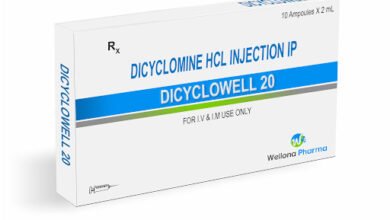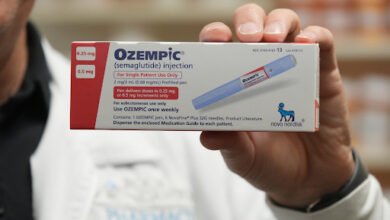What is The Best Painkiller For Spinal Stenosis? – Credihealth

Spinal stenosis is a medical ailment that is caused by the narrowing of the spinal cord and the nerves that form a part of the peripheral nervous system. Most of its effects are felt as a tingling sensation in the nerves and are often characterized by muscle weakness. The area of the body it affects the most is the back and neck.
When facing the discomfort of spinal stenosis, many individuals ask, What is the best painkiller for spinal stenosis? While over-the-counter pain relievers like ibuprofen can offer temporary relief, prescription medications or interventional treatments may be more effective for severe cases.
Why Is Spinal Stenosis Painful?
Spinal stenosis pain arises from narrowing the spinal cord space, which exerts pressure on the spinal cord and nerve roots. This compression can cause symptoms, including back pain, cramping, weakness, and a tingling sensation. These symptoms often start from the back into the buttocks and down the legs. Certain motions and activities can exacerbate spinal stenosis pain, such as:
-
Taking long walks
-
Jumping frivolously
-
Bending and twisting the spine to extreme
-
Contact sports like football, basketball, and hockey
-
Trying to lift something with a rounded back
Also Read: Why are My Fingertips Numb? 7 Common Causes and Solutions.
How can one effectively prevent the progression of spinal stenosis?
It’s important to take a proactive approach to minimize discomfort and maintain overall spinal health when dealing with spinal stenosis. Some strategies to consider include:
Avoid Strain-Inducing Activities: Avoiding activities that strain the spine is crucial in preventing further aggravation of spinal stenosis.
Embrace Low-Impact Exercise: Initiating a low-impact exercise routine can help maintain mobility, flexibility, and muscle strength. These exercises promote spinal health without subjecting the spine to excessive stress.
Focus on Posture: Improving posture can alleviate strain on spinal tissues and structures. Practicing proper posture can significantly reduce discomfort associated with spinal stenosis.
Quit Smoking: Nicotine, which is present in tobacco products, can reduce blood flow to the spine, hindering the body’s natural ability to repair and heal itself. Quitting smoking can contribute to improved spinal health.
Maintaining a Healthy Weight: Carrying excess body weight stresses the spine. Inculcating a healthy diet and exercising regularly can help alleviate the stress.
Incorporate Gentle Stretches: Regular stretching can help prevent muscle tension, reducing spinal stenosis pain.
Which are the effective methods for relieving severe pain caused by spinal stenosis?
Severe spinal stenosis can significantly impact an individual’s quality of life. Various treatment options can provide relief in such cases. These include medications, physical therapy, alternative treatments, and, in some cases, surgery.
Physical Therapy
Physical therapy is an augmentative and effective non-surgical treatment for spinal stenosis. It focuses on alleviating pressure on spinal nerves through exercises, stretches, and other alternative therapies such as heat or cold therapy, and electrical stimulation is also found to be helpful. Physical therapy for spinal stenosis helps in the following:
-
Reduces pain and stiffness
-
Helps in relieving nerve compression
-
Strengthening abdominal muscles
-
Improving lumbar spine alignment
-
Lower Back Pain Relief
What is the best painkiller medicine for spinal stenosis?
experiencing severe pain due to spinal stenosis? The medication that may be prescribed depends on specific symptoms and the patient’s medical history. Common medications used to manage spinal stenosis pain include:
Nonsteroidal Anti-Inflammatory Drugs: NSAIDs help in reducing pain and inflammation. Examples include Advil, Aleve, and Motrin.
Antidepressants: Certain antidepressants boost neurotransmitter levels in the spinal cord, reducing pain signals. However, these medications may take several weeks to show significant results.
Anti-Seizure Medication: Some anti-seizure medications, like gabapentin and pregabalin, can alleviate pain stemming from nerve damage.
Epidural Steroid Injections: These injections are commonly used to manage lower back pain caused by inflammation in the spinal nerves. Corticosteroids in the injection reduces swelling.
Muscle Relaxants: Muscle relaxants can help alleviate muscle spasms, numbness, and tingling.
Also Read: How much Ibuprofen can I take?
Choosing the Best Muscle Relaxer for Spinal Stenosis
Determining the best muscle relaxer for spinal stenosis may vary from one patient to another. However, several options are commonly prescribed to address muscle spasms and pain associated with spinal stenosis:
Baclofen: Baclofen is an antispastic drug used pervasively to treat muscle spasms in the spinal cord, including lumbar spinal stenosis. It influences spinal nerves, helping in improved muscular motion. Common side effects include weakness, dizziness, and gastrointestinal discomfort.
Cyclobenzaprine: Cyclobenzaprine reduces muscle hyperactivity in the brain, effectively relieving muscle spasms associated with musculoskeletal conditions. While it may relieve some spinal stenosis patients, its effectiveness diminishes after two to three weeks. Some side effects associated with its usage are dizziness and extreme thirst.
Methocarbamol: Methocarbamol blocks pain signals to the brain, relieving pain and muscle spasms. It has a less sedating effect and a lower abuse risk than other muscle relaxers. Common side effects include dizziness and gastrointestinal discomfort.
Also Read: Can I manage Back Pain at home?
What are the Alternative Spinal Stenosis Treatments?
Alternative therapies can complement traditional treatments for spinal stenosis. Some popular alternative treatments for spinal stenosis include:
Acupuncture: It is the practice of penetrating fine needles into the body to stimulate natural pain relief and promote overall well-being.
Chiropractic Care: Chiropractors use spinal manipulation and adjustments to improve spinal alignment.
Massages: Therapeutic massages can reduce muscle tension and enhance relaxation.
Exercise Routines: Doing gentle exercises like yoga or tai chi can improve flexibility and reduce muscle tension.
Surgery: Surgery is typically the last option for severe spinal stenosis cases in which individuals suffer significant pain, walking difficulties, or bladder control loss. While surgery cannot cure spinal stenosis, it can somewhat restore normal spine functionality. Common surgical procedures for spinal stenosis include:
Foraminotomy: During this procedure, the surgeon expands the part of the vertebra where nerve roots extend, thus relieving pressure on the nerves.
Laminectomy: Laminectomy is a common surgery for spinal stenosis involving the removal of bone, spurs, and ligaments that compress the nerves.
Spinal Fusion: Spinal fusion can be performed with a laminectomy to stabilize the spine by joining vertebrae and reducing spinal movement.
MILD Procedure: The Minimally Invasive Lumbar Decompression (MILD) procedure is a less invasive treatment option that prevents instability and offers a quicker recovery than traditional fusion surgery.
Vertiflex Spine Treatment: This alternative procedure involves the implantation of a titanium decompression spacer between vertebrae to relieve pressure.
Also Read: Advancements in Minimally Invasive Spine Surgery Techniques
Conclusion-
Thus, we have discussed what Spinal stenosis is and how the pain associated with it may be treated. Several methods impact this condition, including physical therapy or medications and, in extreme cases, surgery. Selecting the best alternative as per your symptoms is an important task that must be ordained and applied after consulting with a health expert to obtain long-term relief in case of injury or pain associated with this condition. Thus, with the right approach, individuals with spinal stenosis can find effective relief and enhance their overall well-being.
Also Read: Chiropractic Care And Physiotherapy To Help Your Body Heal Better
Source link
#Painkiller #Spinal #Stenosis #Credihealth



